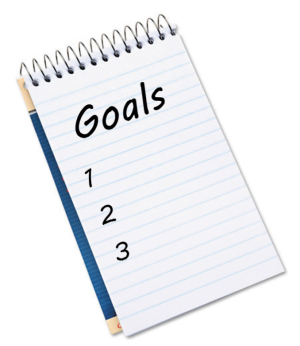LESSON DESCRIPTION
In this lesson, students learn to figure out their desired financial objectives by planning smart and effective financial goals that will help them achieve their goals. They will set financial goals that are specific, measurable, attainable, relevant, and time-bound.

Many men and women invest, spend, invest, then wonder why they’re short of funds when it’s time to cover the invoices or the reason they never have the money for those things they actually want. If they’d set clear objectives, created plans to achieve them and worked the plans as faithfully as they watch their favorite YouTube channels, they’d be not as stressed and a great deal happier.
If you’re planning an event for your friend, would you just throw it all together at the last moment? No. You would choose the goal (a great event) and work backward to determine everything you’d need to do to make it happen.
Setting goals that are SMART means that you may describe your thoughts, concentrate your efforts, make use of your own time and resources and raise your odds of attaining what you need in life. In this lesson, we will research what SMART goals are, and we are going to have a look at ways to utilize them to attain your objectives.
What Exactly Does SMART goals Mean?
SMART is an acronym which you may use to direct your target setting.
Its standards are generally credited to Peter Drucker’s Management by Objectives. The earliest known use of this term happens in the November 1981 issue of Management Review from George T. Doran. He said that SMART has come to mean unique things to different individuals.
To Make Sure That Your Objectives are clear and accessible, it needs to be:
- Specific
- Measurable
- Achievable
- Relevant
- Time Bound
The Way to Use SMART
Specific
Your target ought to be clear and unique, otherwise you will not have the ability to concentrate your efforts to feel genuinely motivated to attain it.
What do I wish to achieve? Who’s involved? Where’s it situated? Which tools or limitations are involved?
Measurable
It is important to have quantifiable objectives, so which you may monitor your progress and stay motivated. Assessing progress enables you to stay focused, meet your deadlines, and sense the delight of becoming closer to attaining your objective. A quantifiable goal should address concerns such as: How much? How many? How can I know when it’s accomplished?
Achievable
Your target also should be realistic and achievable to become prosperous. To put it differently, it ought to stretch your skills but still stay possible. When you establish an achievable goal, you might have the ability to identify previously overlooked opportunities or resources which may bring you nearer to it. How do I accomplish this objective? How realistic is your goal, according to additional limitations, such as monetary things?
Relevant
This measure is all about ensuring that your target matters for you personally, and additionally, it contrasts with other pertinent objectives. Most of us need support and help in attaining our objectives, but it is important to keep control over them. Thus, ensure your plans drive everybody ahead, but you’re still accountable for achieving your goal. A relevant aim can answer “yes” to those questions: Is this the ideal moment? Does this fit our additional efforts/needs? Am I the ideal person to accomplish this objective? Is it important in the present socioeconomic atmosphere?
Time-bound
This portion of the smart goal standards helps to stop regular activities from taking priority on your longer-term targets. When? What could I do three months from today? What could I do three weeks from today? What can I do now?
PROCEDURE
Students can do this on their own or in groups. Give each student or group a goal statement or statements (or even make your own statements that may be more relevant to your students). Guide students to use the worksheet to add details to the goal statements.
Guide students to analyze the different elements of this goal and include what is needed for every elements of the “SMART” acronym. Model one rewrite if it is beneficial to get the students started.
Arrange for students or groups to exchange aims to peer review the revised goals for completeness or missing components.
- Save money to buy a bicycle.
- Go on a backpacking trip with friends.
- Visit the local tourist area.
- Buy a new monitor for my computer.
- Buy a birthday gift for my mother.
- etc.
Example to model for the goal-writing process:
Original Goal: To find a pair of jeans.
S= what type of jeans? Possible answer: new pair of jeans
M= Just how much would be the jeans? How long do I have to save? Possible response: The jeans are $60 but the sales person told me they’d go on sale a month at 10 percent off. So, I have one month to spare if I need a cheaper price.
A= What resources do I have available to attain the goal? I know I will earn at least $30 a week doing yard work in the neighborhood.
R= Do I really require a new set of jeans right now? Possible response: my current jeans are worn.
T= When do I need to find these jeans? Possible response: I wish to receive them today, but would rather await the sale price.
New SMART goal: To save $20 a week from my job for the next three weeks to buy a new pair of jeans.
GRADE LEVEL
7-12, Young adults
CONCEPTS
- Understand spending goals
- Personal goals and money goals
- Personal finance
OBJECTIVES
Students will:
- Write personal financial goals.
- Learn to understand SMART goals.
- Identify ways to improve their spending decisions and behavior.
- Identify sensible vs. unwise spending
- Prioritize spending decisions
TIME REQUIRED
20-30 minutes.





 Teaching Objectives:
Teaching Objectives:
 Teaching Objectives:
Teaching Objectives: